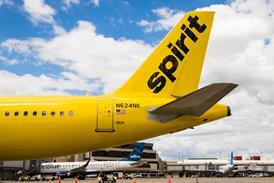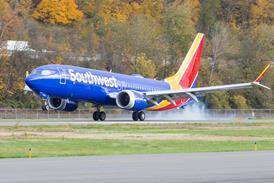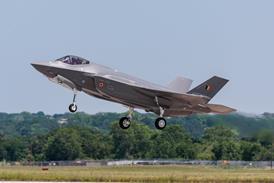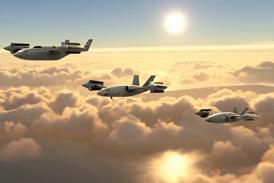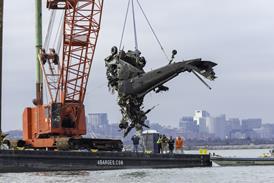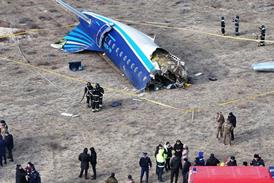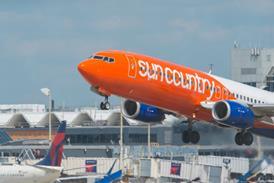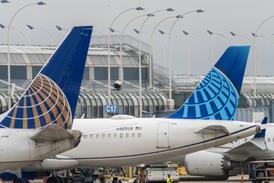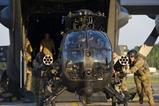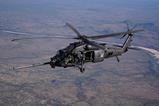Uncrewed aircraft manufacturer Kratos is modifying one the company’s marquee offerings to match the US Air Force’s (USAF’s) growing ambitions for autonomous fighter jets.
The San Diego-based firm has revealed a rendering of its XQ-58 Valkyrie uncrewed jet aircraft featuring a new piece of kit: landing gear.
An image shared by Kratos on LinkedIn shows what appears to be a Valkyrie airframe resting on internally carried tricycle landing gear. That is significant because the current XQ-58A design does not feature wheeled landing gear, instead returning to the ground via a parachute system.
“Being runway flexible/runway independent delivers maximum operational utility to the warfighter,” Kratos says of the new approach.
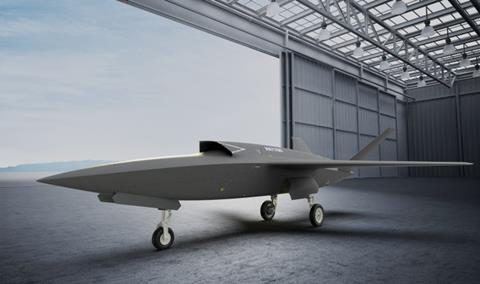
The single-engined XQ-58 launches currently has two methods for getting airborne: a runway-independent approach launching from a set of inclined rails using external rocket boosters; or a detachable wheeled trolley that allows the jet to take off from a conventional tarmac airfield.
Internal landing gear would mark the third take-off option for the XQ-58 and the first to offer recovery without use of parachutes.
The new configuration of the jet is not an unexpected development.
Kratos chief executive Eric DeMarco revealed the company was working on a conventional take-off and landing (CTOL) variant of the Valkyrie back in 2024. During an earnings call last August, DeMarco indicated the first flight of a landing-gear-equipped XQ-58 would be happening in the near future.
The company has not revealed whether the new configuration will result in any changes to the Valkyrie’s payload capacity or flight performance. The image of the CTOL-equipped XQ-58 shows an outer mold line shape highly similar to the existing design.
The new capability, or at least the intent to develop it, comes as the USAF appears to be expanding the scope of its fledging uncrewed fighter programme.
Once envisioned as ultra-low cost, so-called “disposable” jets, the service has moved away from that early concept and now appears to be seeking reusable fighters that boast greater capability.
Industry officials involved in the project, known as Collaborative Combat Aircraft (CCA), tell FlightGlobal the focus is now on building aircraft that are “attrition tolerant” – affordable enough to be produced in large numbers, while still featuring some survivability attributes and the ability to fly repeated missions.
Anduril and General Atomics Aeronautical Systems were selected to produce the first the prototype CCA jets, which have been named the YFQ-44A and YFQ-42A by the air force. Both designs feature attributes associated with crewed fighters, such as a low-observable profile, internal weapons bays and landing gear.
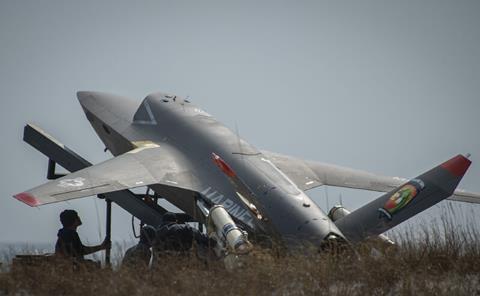
Kratos was unsuccessful in securing a contract under the first increment of the CCA programme, but the company has said it plans to compete for the second round, currently under development.
With the pending addition of a CTOL Valkyrie bringing the jet more in-line with the offerings from Anduril and General Atomics, Kratos is positioning the take-off optionality of the XQ-58 as an asset – particularly the runway-independent capability.
“The Valkyrie’s ability to be pre-deployed and operated remotely, without requiring runway or airfield operations, make it a critical deterrence for near-peer adversaries, while delivering maximum operational flexibility and utility to the US warfighter,” the company says.
While the USAF has moved on from the Valkyrie for now, the US Marine Corps (USMC) has an XQ-58 flight test programme covering six sorties. Last October, the service paired a Valkyrie with Lockheed Martin F-35Bs during exercises in Florida.
Those drills saw the XQ-58 act as a forward-deployed sensing platform, sending targeting data back to the F-35Bs via the Link 16 digital communications system. Pilots aboard the manned stealth fighters then evaluated the targets for possible strike.
Kratos and the USMC have also hinted at the possibility of developing an XQ-58B variant that would be tailored for electronic attack and suppression of enemy air defence roles.
The USAF plans to complete the first flight of its two YFQ uncrewed fighters later this year, with a focus on the supporting air superiority missions.



